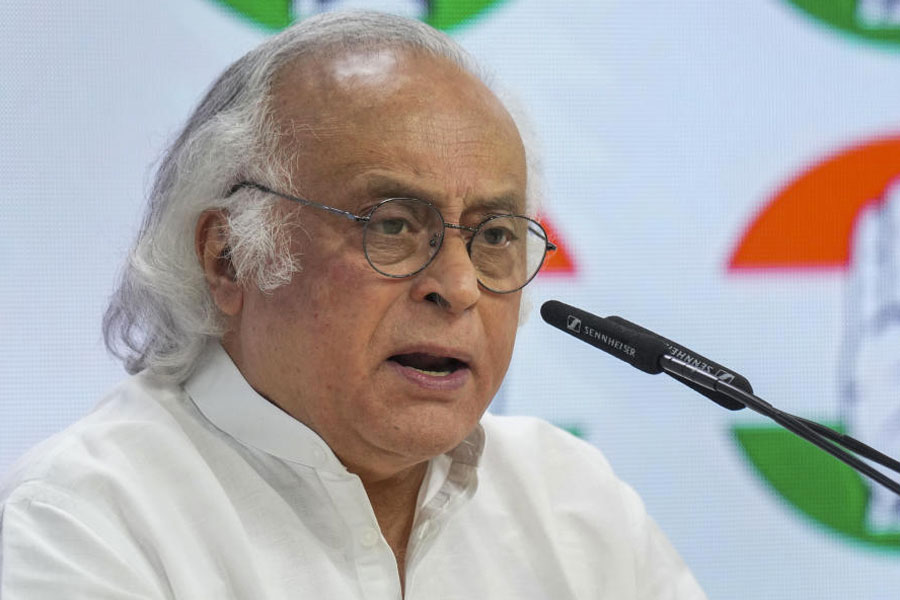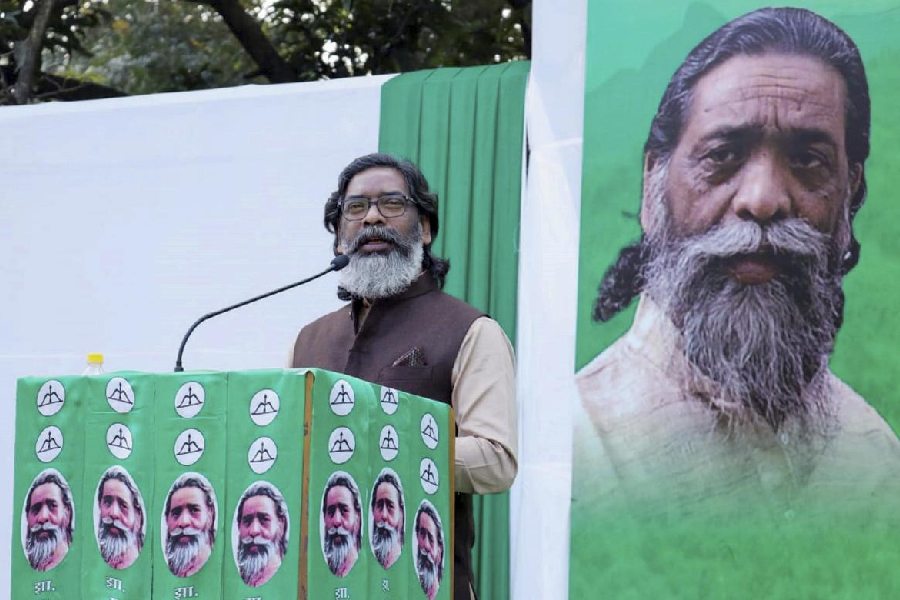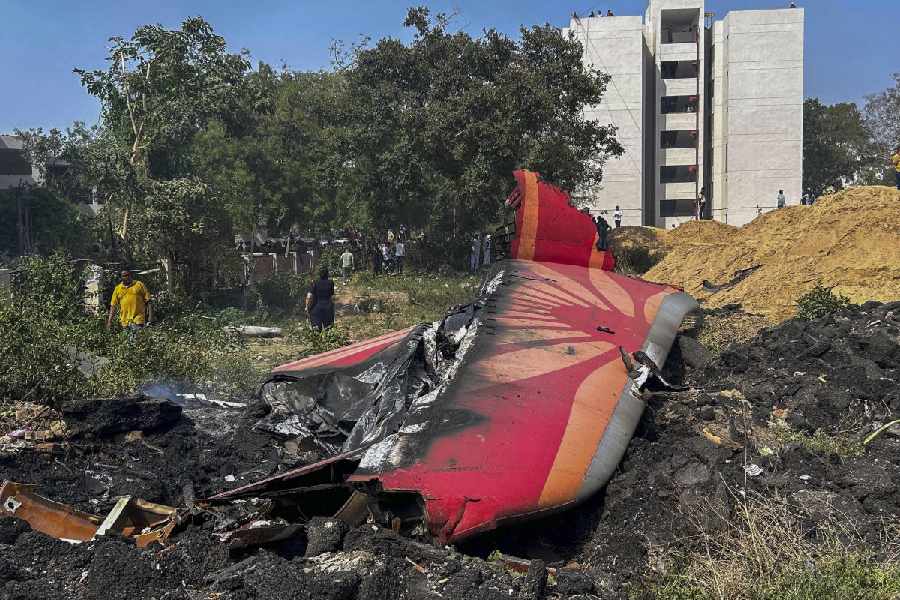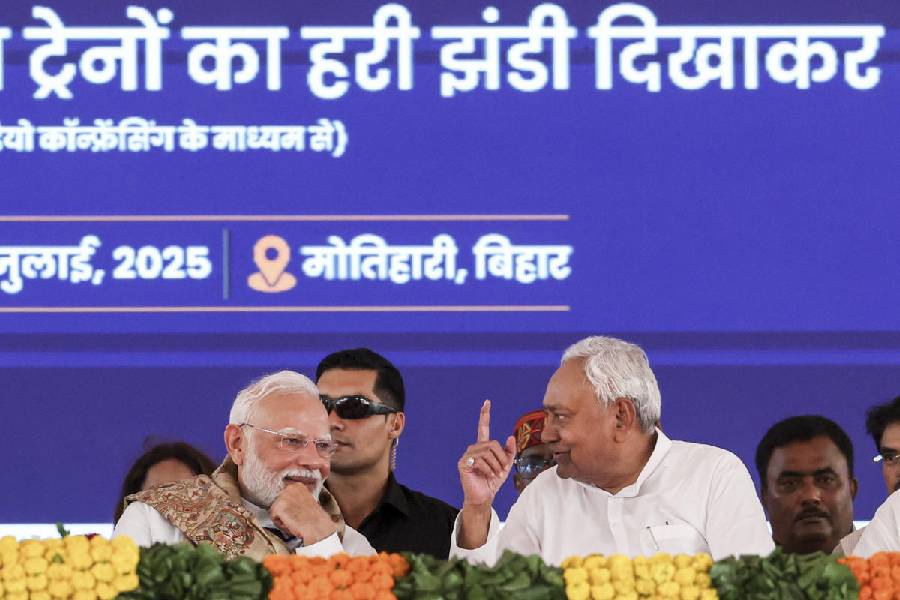
Who are these weathered, withered, stunted men and women who've resided in the art of Rabin Mandal all these years and were seen once more in his recent solo show at Galerie 88? People who seem wrapped in self-effacing withdrawal, as though too aware of and shrinking from unfeeling, or hostile, stares? People with gaunt jaws, pummelled foreheads and drooping, melancholy eyes?
Are they the members of a tribe that lives in inaccessible forests? They do, indeed, have a resemblance to the brusquely hacked contours of tribal sculpture. To the angular simplification of figuration in primitive art. But if the 87-year-old Mandal had paid a tribute to tribal art form in his imagery, he would probably have exhausted his imagination by now, instead of recording for more than 50 years as a practising artist with a signature niche in Bengal art.
If these figures haunt the city artist, it's obviously because he - and we - see them around us. Everyday, everywhere. Struggling, trying to survive, resilient. An inexhaustible source of inspiration for an art elder whose humanist zeal hasn't ebbed with age. We can also read the artist's own struggle in these portraits for he tried to remain faithful to his passion for art after his B. Com and while he worked in the Railways.
There is thus a strong emotional content in his art. No lightness of being can lend wings to the figures - the kings and queens who ultimately prevail - and transport them to fantasies of Eden. Rather, the stubborn Rouaultesque outlines that weigh them down suggest that life must be lived with mute endurance. So, yes, there is a strain of resigned passivity in them. In the way some of the figures - mostly women - cross their arms in a defensive gesture that accentuates their vulnerability in today's climate of violence. But they can also surprise you with a steady, appraising gaze as in Nos 12 and 18.
His Expressionist brush and other tools are, no doubt, dramatic. But it's also true that though de Kooning is an influence, Mandal hesitates to wreck form as radically, as feverishly as the Dutch-American did. Nor does he pluck his figures out of their isolation and cast them into theatrical situations the way Rouault did. In other words, it does seem that his experiment with form isn't taken to quite the unpredictable dimensions his established imagery premises. But there was one particular work which indicated a direction waiting to be explored by the artist and that was No. 16. It's also inexplicable why this seasoned veteran, disdainful of trends and markets, turned away from the remarkable landscapes he used to do in the past, even if sparingly. Perhaps he will return to them in his next solo exhibition?










